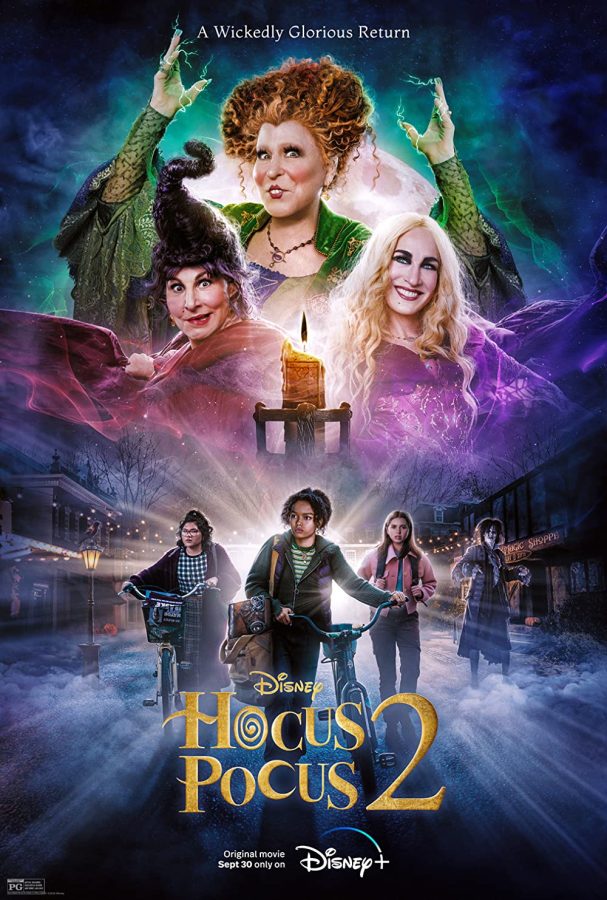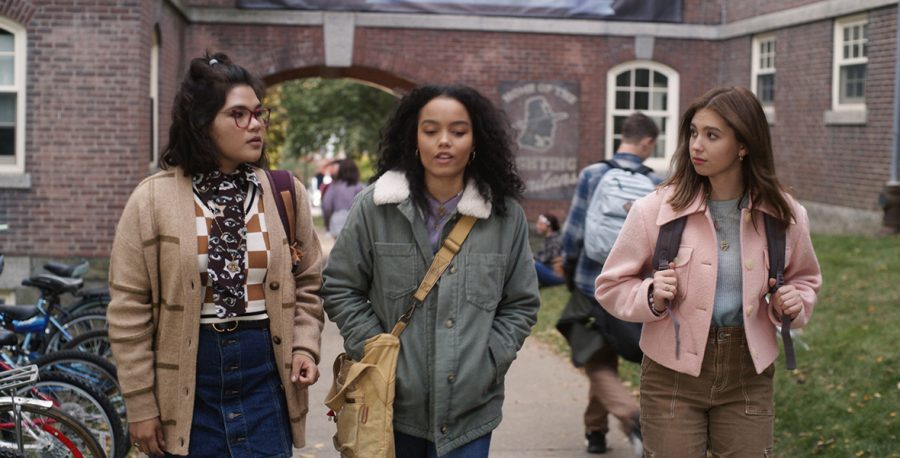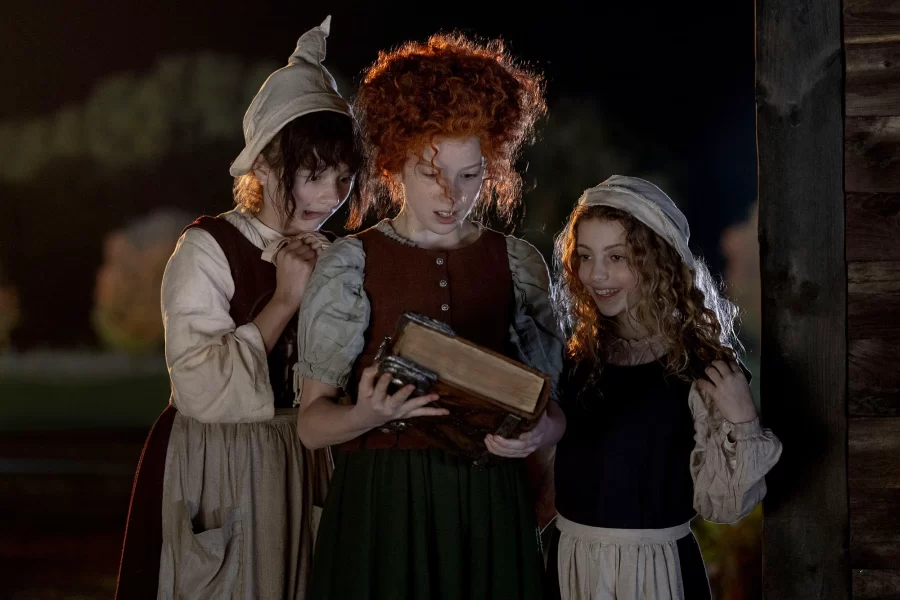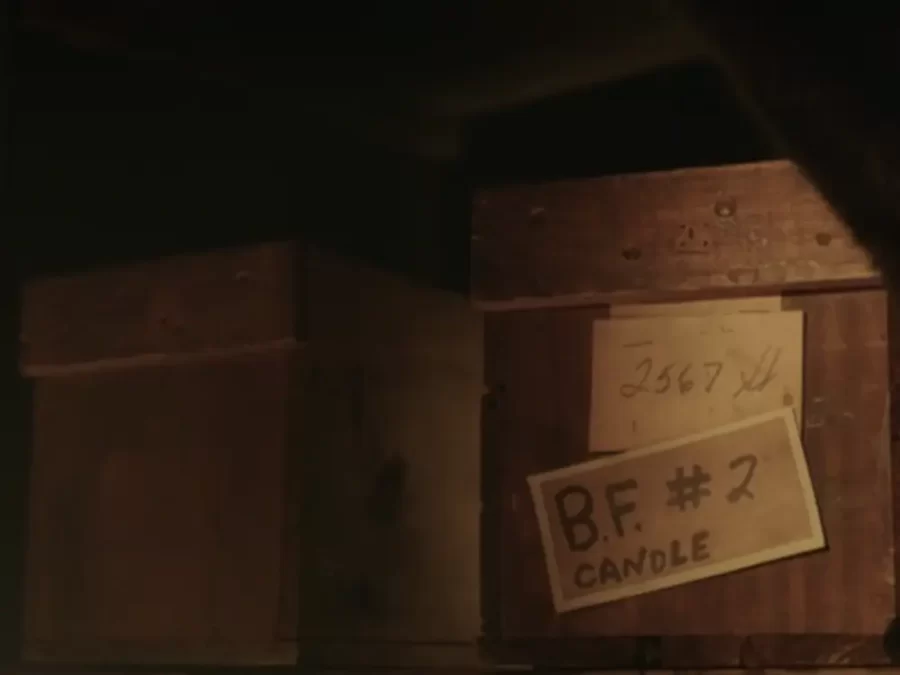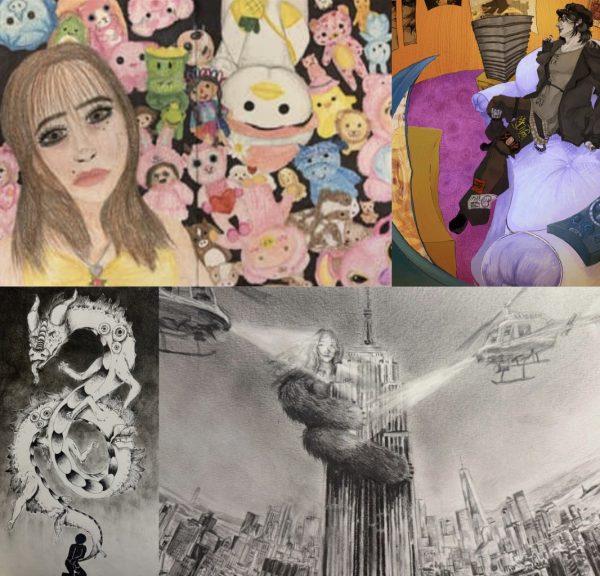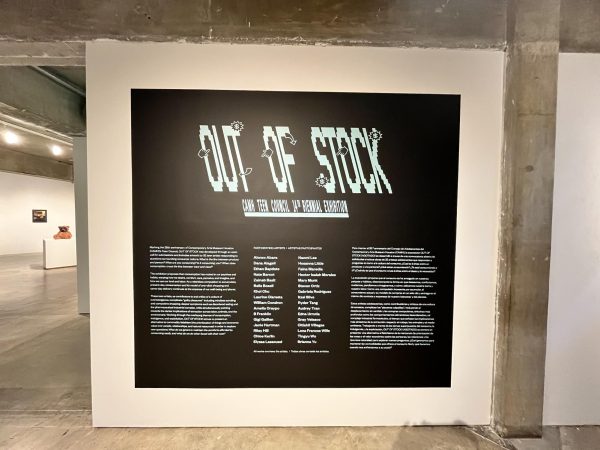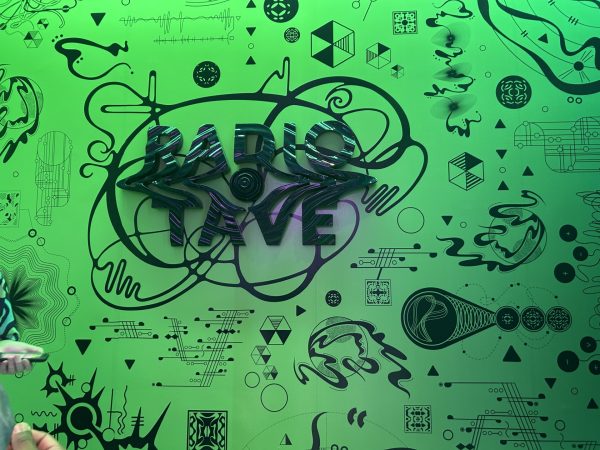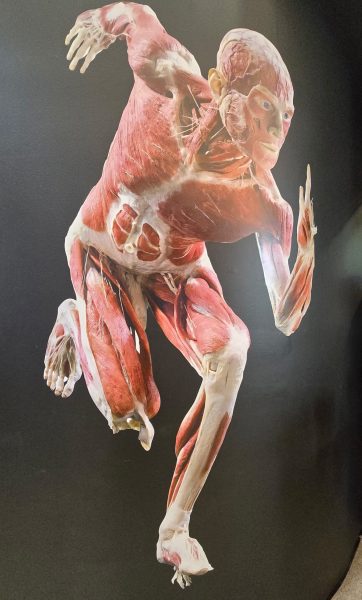“Hocus Pocus 2” lacks the magic of the original
The movie poster for the Disney+ streaming release of Hocus Pocus 2.
Warning: The following article contains spoilers for both “Hocus Pocus” and “Hocus Pocus 2.”
The witches are back, but they are not here to stay, we think. (More on that later.) Regardless, I am not sure I want them to stay. “Hocus Pocus 2” was eagerly awaited by fans of the 1993 original “Hocus Pocus,” which initially received bad reviews but had a slow burn success, eventually garnering a cult following. Disney+ released “Hocus Pocus 2” for streaming on September 30. The witchy cauldron of anticipation boiled and toiled, particularly because of an older generation’s yearning for nostalgia (some now sharing it with their kids). In spite of all the bubbling, the majority of reviews for “Hocus Pocus 2” came to the consensus the long-awaited movie was… vanilla, and I agree.
I’m not referring to the classic, all-time favorite ice cream flavor. The original movie would be more apt for that description. It’s timeless. On the contrary, I am describing the new movie’s lack of any sort of “pizzazz.” No sprinkles. No chocolate. No whipped cream. Just plain vanilla ice cream. There were definitely some funny parts, but they were mostly isolated to the sisters, whereas the original had humor sprinkled throughout all characters equally.
The original movie follows three kids in ‘90s: Max Dennison, Allison, and Thackery Binx, a 1690’s teenager cursed to be an immortal black cat. They fight to stop the Sanderson sisters: Winifred (the leader and most intelligent sister), Sarah (the ditzy, boy-crazy, singing child-lurer) and Mary (Winifred’s right-hand) from eating the soul of Max’s younger sister, Dani. After Max lights the black flame candle and accidentally resurrects the witches, the kids kill them by teaming up with Winifred’s zombie ex-lover, Billy Butcherson, and outsmarting them with modern technology.
Understandably, the sequel takes a different approach. It follows teenage friends Becca, Izzy, and Cassie. Becca and Izzy are tricked by Gilbert, their witchcraft-mentor and friend who owns a magic novelty shop, into lighting a new black flame candle, consequently resurrecting the witches in 2022. The three girls succeed in overcoming a rift of misunderstandings to prevent the Sanderson sisters from completing a spell that makes them all-powerful.
I would figure the sequel would have humor that reflected the generally less-conservative humor of the modern era in comparison to the 90’s. This was somewhat true, as the movie pushed the boundaries more socially than with slightly risqué jokes.
My main issue with the new movie is that it was very Disney Channel-esque. The humor was not as suggestive as in the original movie. This could partially be because the sequel’s target audience was younger and more family friendly, while the original was tailored for adolescents and above. For example, the Sanderson sisters are brought back to life when a virgin lights the black flame candle on Halloween night during a full moon, with black cat Thackery Binx bestowing Max the title of “airhead virgin.” This virgin joke is recurrent throughout the entirety of the original movie to the extent of where a young viewer is likely to ask for a definition.
In the sequel, it was mentioned only briefly overall and probably went over many unsuspecting viewers’ heads. It was made known that Gilbert tricked the girls, as a non-virgin he could not resurrect the sisters. Although this is addressed, it is only revealed in an innuendo-type of manner, in which the kids question why they were tricked, and he responds with a “well” and shrugs his shoulders.
Moreover, the difference in target audience is also evident in the different relationships represented in the movie. When Max is in class bashing Halloween, Allison interjects and defends the honor of the town’s sacred holiday, to which Max suavely gives, or in the very least attempts to suavely give, her his number “in case Jimi Hendrix shows up [on Halloween night].” Although the original focuses on Max’s efforts to not repeat Binx’s mistake and save his little sister, Max’s romantic relationship is very much present, complete with the “trying to kiss at the most inopportune and frustrating times” trope.
On the other hand, there is not very much romance in the sequel. Cassie does have a boyfriend, Mike, but there are very little, if any, displays of affection. Mike is not even a good person. He bullies Cassie’s friends and is, as Winifred said, the “village idiot.” I find his character annoying overall even though he is intended to provide some comic relief, because his jokes are mostly bland (although there are some funny moments.) His main purpose is to simply serve as a conflict for the three friends to overcome, much to my dismay. When the friends argue and talk through this conflict throughout the movie, it is irritating because it is unnecessary middle school-type drama, but this may be relatable to the younger target audience.
Although the sequel was more reserved with suggestive humor, thus losing the interest of an older audience, it was liberal socially. There were significant differences between the two movies with regard to diversity. While the cast of the original movie was racially vanilla, the sequel incorporated a diverse cast not only in supporting roles, but also in the main protagonists Becca, Cassie, and Izzy. In addition to this, the LGBTQ+ community is incorporated into the cast. When the Sanderson sisters perform in their costume contest, they compete against drag queens who are played by real-life drag queens Ginger Minj, Kahmora Hall, and Kornbread Jeté. All these factors considered, it is evident the generational gap between the 1990s and 2020s is intertwined in their respective casts and plot lines.
Additionally, the movie was definitely not discreet with its highlight of religious fanaticism, notably garnering backlash from one parent who felt the movie would “unleash hell on your kids and your home.” While the original makes fun of Satanism (with the witches mistakenly worshiping a man dressed as the devil), the sequel seems to poke fun at early practices of Christianity. The sequel opens with a newly 16-year-old Winifred. She is banished from Salem by Reverend Traske because she refuses to marry John Pritchett and insults him in the process, a social taboo double-whammy of defying the church and patriarchal social order. (The funniest line is when Winifred proudly reveals she kissed Billy Butcherson in the graveyard, to which a villager shockingly responds, “She relishes in her petulance!”)
The village attempts to tear Sarah and Mary from Winifred, who is desperately fighting to stay with them. A spider, Mary and Sarah’s gift to Winifred, intervenes. Commotion ensues as the villagers go into a hysteria over the “eight legs of sin” on the Reverend’s arm, which he believes to be “Satan’s hand.” This distraction allows the sisters to escape. They flee to the woods and meet Mother Witch, who introduces them to magic and gives Winifred “Book” (her sentient book of spells) for her 16th birthday, creating the comical villains we all know today.
I love how these scenes simultaneously set up the backstory for the Sanderson sisters while also providing foundation for the present-day plot, which focuses on the Sanderson sisters wanting to stay together. As payment for Winifred gaining total power, Mary and Sarah disintegrate into glittery dust. I appreciated the incorporation of the glitter, as it served as a callback to the sisters’ deaths in the original film and makes the movie all the more whimsical.
Winifred ultimately abandons being all-powerful in order to join her sisters in another realm. She leaves the girls with a final lesson: to cherish their coven, thus solidifying the not-so-original theme of friendship. Since this type of message has been done so many times in family-friendly type movies, I was left feeling disappointed at the lack of freshness. Albeit I will admit the message was cute and uplifting, and this was probably the intention of the writers: to be positive and not necessarily have a new take on themes but rather to reimagine the original movie.
After the sequel ends with the heart-tugging death of the Sanderson sisters, there is an post-credits scene. Cobweb, Gilbert’s cat that pays homage to Binx, is shown in what appears to be a storage room in the magic shop. He jumps on a shelf and lands next to a box that reads “B.F. #2 Candle.” I suspect this hints that there is another black flame candle that can possibly resurrect the Sanderson sisters.
Upon further research, I discovered other sources agree with me. In reality, its main purpose is to serve as a plot fail-safe if Disney decides to make the “Hocus Pocus” franchise a trilogy. For now, the possibility of their return will bid us farewell until another curious, airhead virgin stumbles upon a black flame candle on Halloween night during a full moon. If it’s happened twice, it can happen again.
Your donation will support the student journalists of Carnegie Vanguard High School. Your contribution will allow us to cover our annual website hosting costs and fund field trips, competition fees, and equipment. We appreciate your support!

Sasha Cabral is a senior at CVHS. A musician and an artist, she imbues everything she does with creativity. She loves rock music, the colors red, black...


